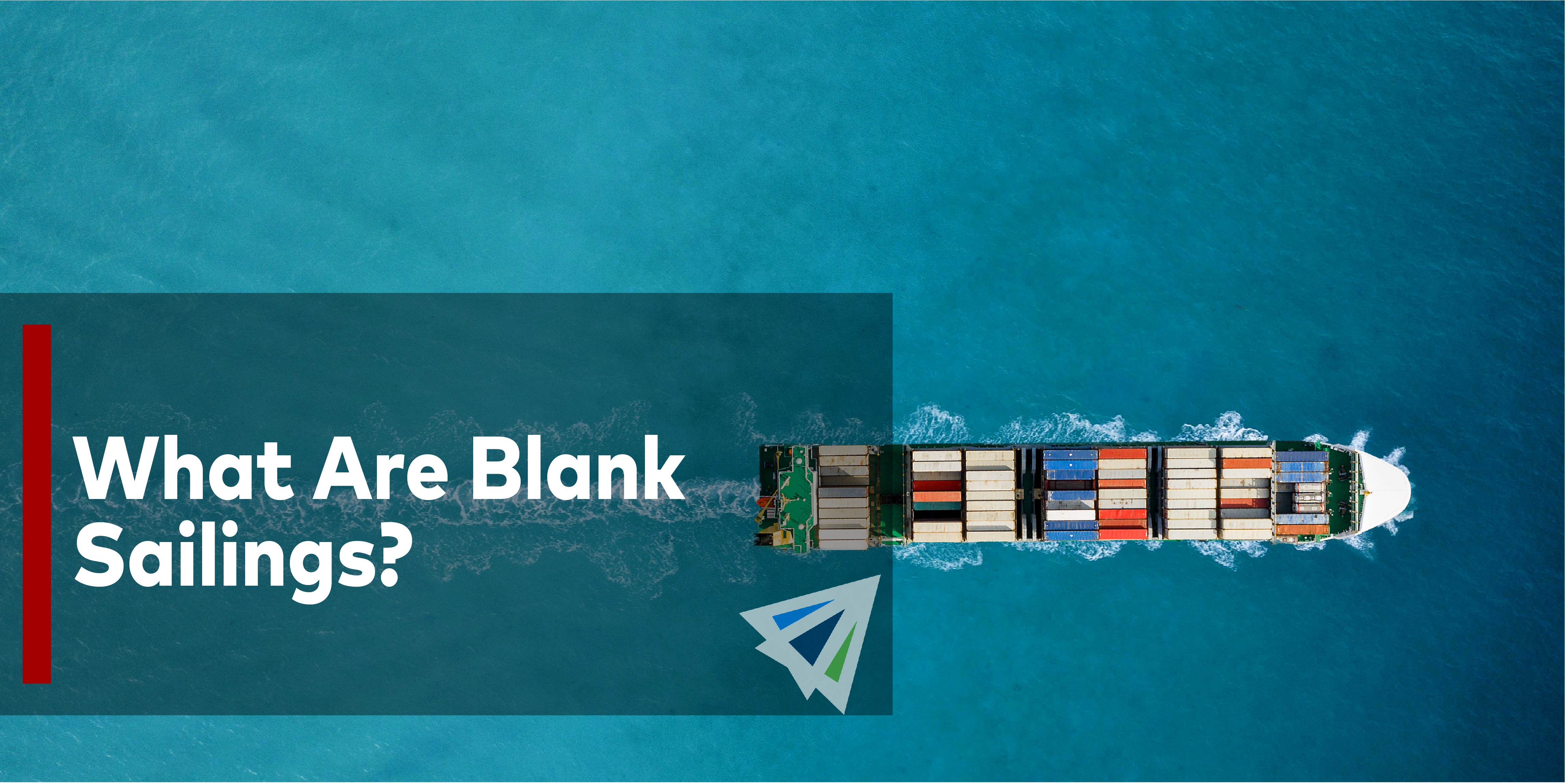Your shipment is damaged.
Your cargo was lost.
Your shipment will be delayed.
Your goods were pulled for a Customs exam.
Those are just a couple of the things you never want to hear when shipping cargo internationally. Having your goods damaged, lost, or delayed in transit is a huge pain in the neck both because its time consuming and costly.
However, there is another term you may never want to hear during your shipment career – Blank Sailing. A blank sailing can be a huge inconvenience for anyone shipping via ocean vessels. Here’s a little more about what it is:
What is a Blank Sailing?
A blank sailing, mostly simply put, is a cancelled shipment. But not just for an individual shipment – a blank sailing means an ocean vessel is skipping an entire port or shipping route. These are most commonly cancelled by the carrier themselves.
A blank sailing can take multiple forms. Sometimes a blank sailing means that the vessel will be skipping a port it was previously planning on stopping at during its route. Other times, a blank sailing means that the ship will be sipping the route altogether. In either case, it always means an inconvenience for shippers who had cargo designated to travel to said port.
If you have had a shipment cancelled due to a blank sailing, or are looking to take preventative measure from experiencing one, here is a bit more information regarding why blank sailings happen and what you can do:
Reasons for Blank Sailings
As previously stated, a blank sailing generally occurs because the carrier cancels a stop to a port on their route, or the entire route altogether. There are a few reasons for this, but some of the most common are:
1. Low Demand
If demand for space on a vessel is low, it’s not uncommon for the carrier to issue a blank sailing (aka, cancel the venture entirely). When demand is low for space on an ocean vessel, it is often more cost-effective for the carrier to consolidate shipments from multiple vessels onto one. It lowers costs, reduces risk, and increases efficiency of shipment to wait for more space to be filled up or to consolidate a couple of vessels’ cargo onto one ship.
This is frequently dependent of the destination location’s peak and valley seasons. For example, shortly after Chinese New Year or Golden Week, there may be a number of blank sailings as international factories are closed and demand for shipments is low.
2. Reducing Strings Per Week
Carriers will often ship a certain number of “strings per week”, which is another way for saying “routes per week to a certain location.”
Suppose a carrier is running 8 “strings” per week to Hong Kong, but they want to reduce it to 4-6 strings per week. During a change such as this, previously planned sailings may be cancelled, calling for a blank sailing to occur.
Strings may also be rescheduled on occasion if an ocean alliance is formed, though this is a rarer occurrence/reason for black sailings.
What to Do About a Blank Sailing
PANIC!
We’re kidding – don’t do that. Generally speaking, a blank sailing isn’t a huge deal. They can be a minor inconvenience for shipping times, but any cargo that was on a ship during a blank sailing is set to leave on the next available sailing. However, depending on the circumstances and timing, there may be additional, quicker, and perhaps more cost-effective options to get your cargo to its destination in the off chance of a blank sailing.
If you are struggling to figure out what you should do next regarding your blank sailing, reach out to one of our team members. Our team has seen a number of these instances and is happy to share some insight into how you can move forward to keep your cargo en-route to its destination with minimal hiccups in the process.
